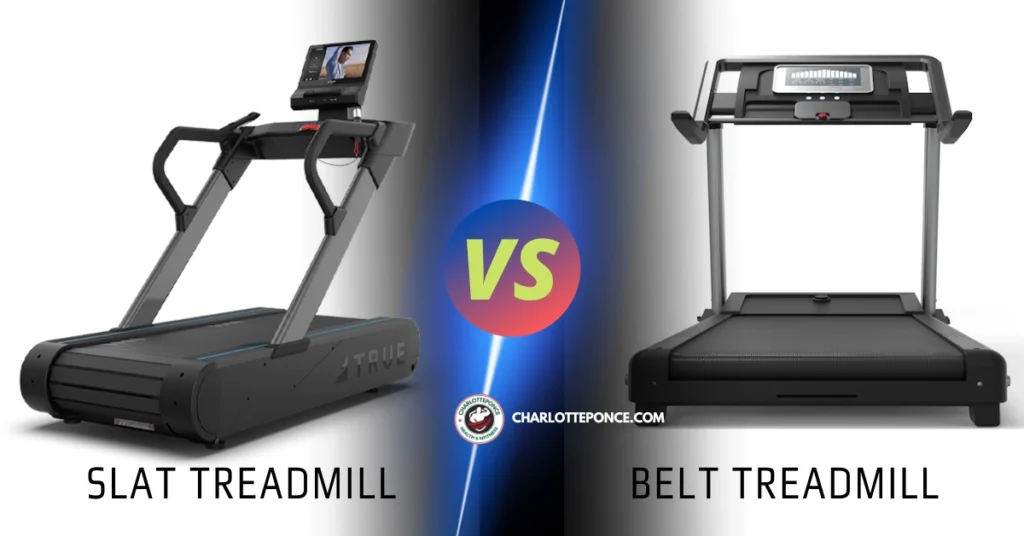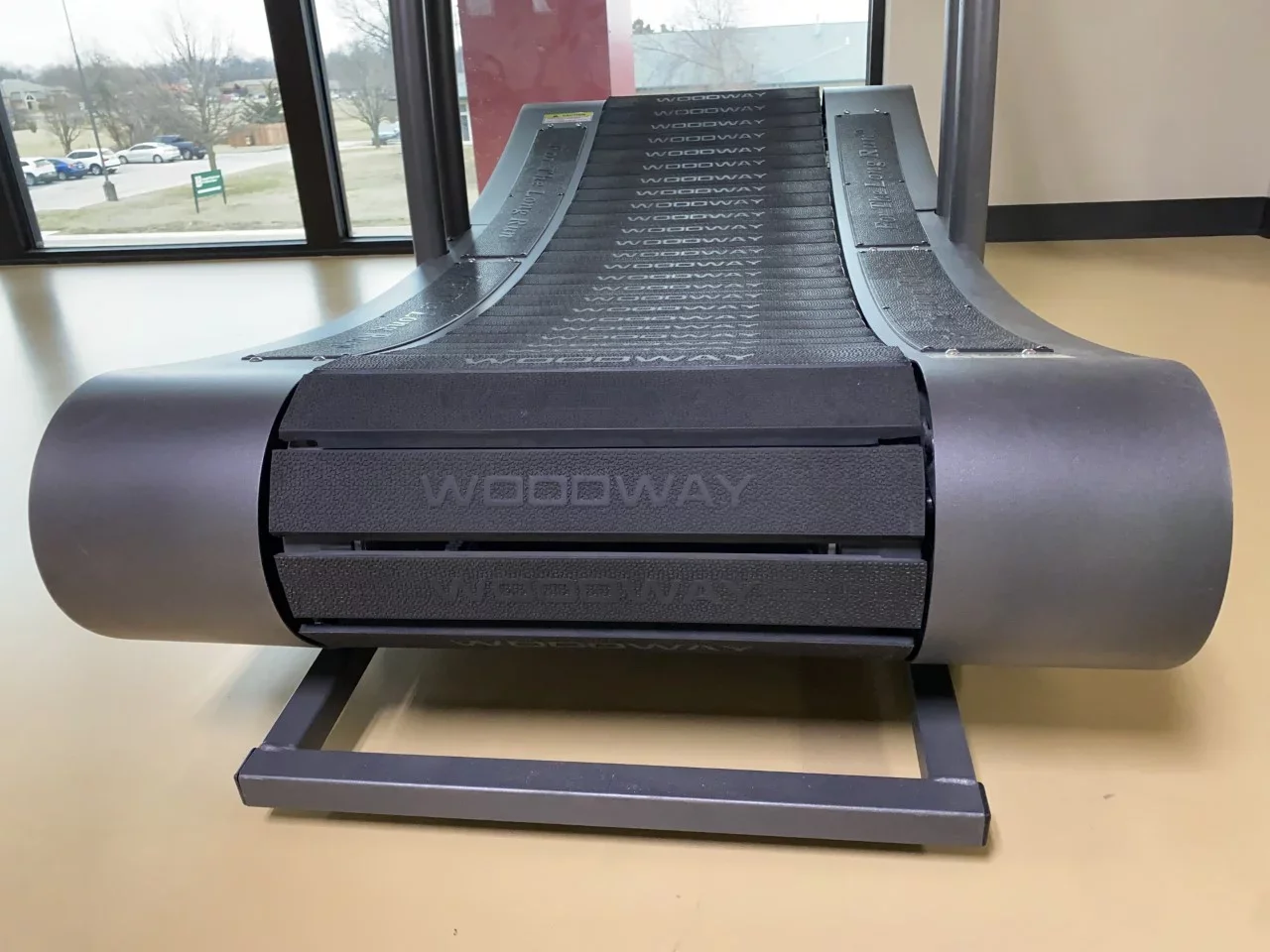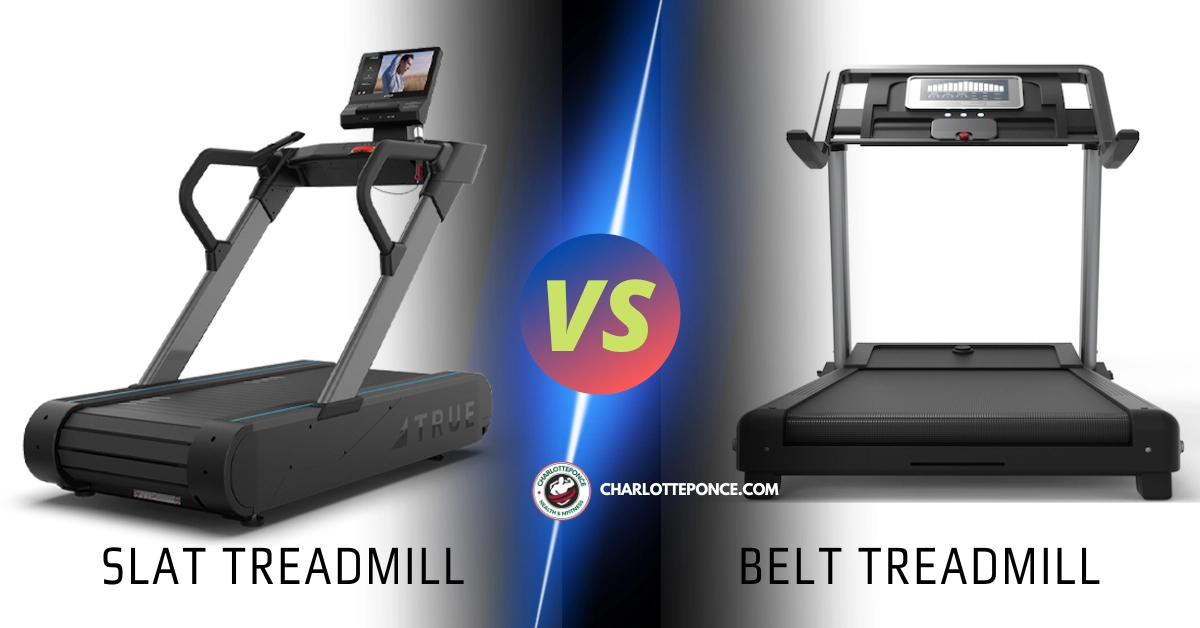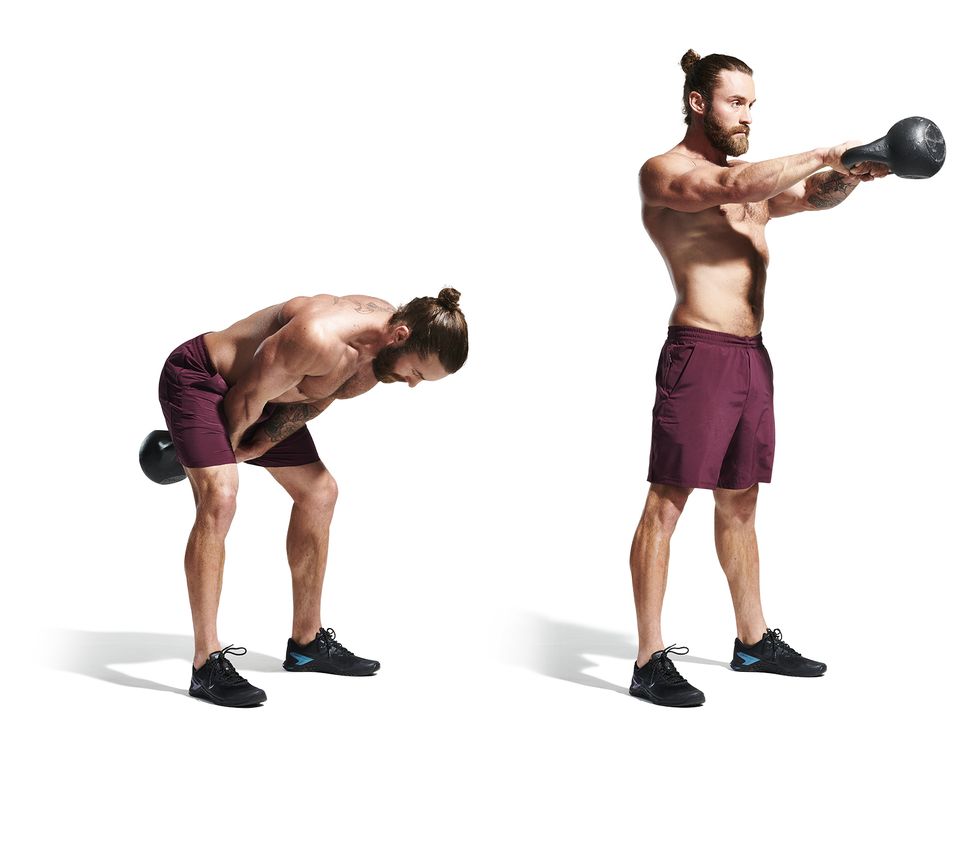Are you endhusiast about Slat Vs Belt Treadmill? A slat treadmill has a belt made from individual slats joined together and reinforced with rubber, making it shock absorbent and great for athletes and injury prevention. Slat treadmills are better for knees, especially for those with tendonitis or arthritis, as they have a softer landing area and fewer springs beneath them.
Slat treadmills, whether flat or curved, are often designed for commercial use and provide increased traction and impact reduction. Woodway treadmills are considered better due to their revolutionary technology that reduces shock and friction. In contrast to traditional treadmill belts supported by a deck, slat belts are thicker.

Page Contents
ToggleWhat Is A Slat Treadmill?
A slat treadmill features a belt made of interconnected slats, offering better shock absorption and reduced strain on tendons and muscles. This design is especially beneficial for athletes and those concerned with joint injuries. In contrast, traditional treadmills have a continuous rubber belt, which may cause more impact on the joints.
A slat treadmill is a type of treadmill that features a belt made from individual slats joined together and reinforced by rubber, providing extra shock absorption. This design is specifically beneficial for athletes and individuals seeking to minimize injuries to their tendons, muscles, and bones.
The following points outline the characteristics and benefits of a slat treadmill:
- The design of a slat treadmill is centered on shock absorption and impact reduction. The belt, composed of individual slats reinforced by rubber, offers a softer landing area, making it particularly advantageous for individuals with knee-related issues such as tendonitis or arthritis.
- Moreover, the construction of a slat treadmill, whether featuring a curved or traditional flat deck, prioritizes commercial use and is often designed and priced for such environments.
- The slat design, whether on flat or curved slat treadmills, enhances traction and provides added impact reduction, especially with rubberized, shock-absorbing slats. This design feature is highly beneficial for individuals seeking a treadmill that prioritizes safety and joint protection during use.
As an alternative to a traditional belt treadmill, a slat treadmill provides distinct advantages in terms of impact reduction and safety during use, making it a favorable choice for athletes, as well as those with knee-related concerns. Whether it’s the soft landing area or the enhanced impact reduction, the slat treadmill stands as a suitable option for individuals seeking a more joint-friendly and injury-preventative treadmill.
Curved Treadmills
Curved treadmills are available with both slat belts and traditional flat belts. Slat belts are made from individual slats reinforced by rubber, providing extra shock absorption and reducing the risk of injuries. They are especially beneficial for athletes and individuals with knee or joint issues.
Curved treadmills offer a unique design that sets them apart from traditional flat treadmills. Here are some key points to consider about curved treadmills:
- Natural Stride: Curved treadmills have a curved deck, which mimics the natural movement of running or walking outdoors. This design helps to promote a more efficient and natural stride, which can lead to better overall running form and reduced risk of injuries.
- Increased Intensity: Due to the curved design, curved treadmills require more effort to run on compared to flat treadmills. This increased intensity can help to elevate your heart rate and burn more calories during your workout.
- High Versatility: Curved treadmills are suitable for a wide range of users, from beginner runners to elite athletes. They offer adjustable resistance levels, allowing users to tailor their workouts to their specific fitness goals and abilities.
- Joint-Friendly: The curved deck of a curved treadmill provides better shock absorption compared to traditional flat treadmills. This can be beneficial for individuals with joint issues or those looking to minimize impact on their knees, ankles, and hips.
- Improved Core Engagement: Running on a curved treadmill requires more activation of the core muscles to maintain balance and stability. This can help to strengthen and tone the core, leading to better overall posture and stability.
- Space-Saving: Curved treadmills are generally more compact in size compared to traditional flat treadmills. This makes them ideal for smaller spaces, such as home gyms or apartments, where floor space may be limited.
Curved treadmills offer a unique and effective way to enhance your running or walking workouts. With their natural stride, increased intensity, joint-friendly design, and compact size, they provide a versatile and efficient option for achieving your fitness goals.
Flat Slat Treadmills
A slat treadmill features a belt made of individual slats joined together, reinforced with rubber for extra shock absorption. This design is beneficial for athletes and those looking to protect their tendons, muscles, and bones. Slat treadmills are especially ideal for individuals with knee issues, as they provide a softer landing area and reduced impact on the joints compared to traditional belt treadmills.
Flat slat treadmills are a type of treadmill that feature a belt made up of individual slats joined together. These slats are then reinforced with rubber, making the belt extra shock absorbent. This unique design makes flat slat treadmills highly beneficial for athletes and individuals who want to minimize the risk of injuries to their tendons, muscles, and bones.
Here are some key points to understand about flat slat treadmills:
- Shock absorption: The rubber reinforcement in the slat belt provides excellent shock absorption, reducing the impact on your joints and muscles. This makes flat slat treadmills a great choice for those with knee or joint issues, as well as anyone looking to minimize the risk of injury during their workouts.
- Traction and stability: The slat design of the belt enhances traction and stability while running or walking. This prevents slips and provides a secure footing, allowing you to focus on your workout without worrying about balance or stability.
- Durability: Flat slat treadmills are known for their durability, as the individual slats are designed to withstand heavy usage over time. This makes them popular in commercial settings, such as gyms and fitness centers.
- Maintenance: While flat slat treadmills offer excellent performance, they may require more maintenance compared to traditional belt treadmills. Regular cleaning and lubrication of the slat belt may be necessary to ensure smooth operation.
- Price: Due to their advanced design and added benefits, flat slat treadmills are typically priced higher than traditional belt treadmills. However, their durability and long-term cost-effectiveness make them a worthwhile investment for serious athletes and fitness enthusiasts.
Flat slat treadmills offer unique advantages in terms of shock absorption, traction, and durability. These treadmills are ideal for individuals looking to protect their joints and reduce the risk of injuries during workouts. Keep in mind that while flat slat treadmills may require more maintenance, their long-term benefits make them a valuable addition to any fitness routine.
Pros And Cons Of A Slat Treadmill
A slat treadmill offers a shock-absorbent belt made of individual connected slats, reducing impact on tendons, muscles, and bones. However, the repetitive pounding on traditional belt treadmills can lead to joint issues like tendonitis and arthritis. Slat treadmills cater to athletes and those seeking to prevent injuries.
When it comes to choosing the right treadmill, considering the pros and cons of a slat treadmill is essential for making an informed decision. Here’s a breakdown of the advantages and disadvantages of using a slat treadmill:
- Shock Absorption: The individual slats joined together with reinforced rubber provide exceptional shock absorption, reducing impact on tendons, muscles, and bones during workouts.
- Ideal for Athletes: Slat treadmills are an excellent choice for athletes looking to minimize the risk of injuries and enhance their performance due to the superior shock-absorbing properties.
- Knee-Friendly Design: Designed with the knees in mind, the thick rubber construction of the slat belt provides a softer landing area, making it suitable for individuals with knee issues such as tendonitis or arthritis.
- Enhanced Traction: The slat design of the treadmill deck significantly improves traction, offering a secure and stable running surface, particularly beneficial for intense workouts.
- Commercial-Grade Construction: Most slat treadmills are designed for commercial use, ensuring robust build quality and durability, making them suitable for high-intensity and prolonged usage.
- Impact Reduction: The rubberized, shock-absorbing slats of a slat treadmill further contribute to reducing the impact on joints, providing a more comfortable and joint-friendly running experience.
Slat treadmills offer superior shock absorption, making them ideal for athletes and individuals with knee issues. Their commercial-grade construction and impact-reducing features make them a desirable choice for those seeking a high-performance treadmill option.
What Is A Belt Treadmill?
A belt treadmill is a type of treadmill that utilizes a continuous running belt made of individual slats joined together. This design provides added shock absorption and is ideal for athletes and those looking to prevent injuries to their tendons, muscles, and bones.
Compared to traditional treadmills, slat treadmills offer a different type of running surface that reduces impact on joints.
A belt treadmill, also known as a traditional or regular treadmill, is the most common type of treadmill found in gyms and homes. It features a continuous belt made of rubber or similar materials that rotates as the user walks, jogs, or runs on it.
Here are some key points about belt treadmills:
- Belt treadmills are generally more affordable compared to slat treadmills.
- The belt provides a smooth and consistent surface for walking or running.
- They offer a variety of speed and incline options to customize the intensity of your workout.
- Many belt treadmills come with built-in programs and features like heart rate monitors, incline adjustments, and pre-set workout routines.
- The belt on a traditional treadmill allows for shock absorption, which can help reduce impact on joints and prevent injuries.
- They are suitable for a wide range of users, from casual walkers to seasoned runners.
Overall, belt treadmills are popular among fitness enthusiasts due to their versatility, affordability, and accessibility for various fitness levels. So, whether you are aiming to shed some extra pounds, improve cardiovascular health, or strengthen your leg muscles, a belt treadmill can be a great fitness tool to achieve your goals.
Pros And Cons Of A Belt Treadmill
Slat treadmills, with their individual slats joined together to form a belt, offer extra shock absorption, making them ideal for athletes and those seeking to avoid tendon, muscle, and bone injuries. In contrast, regular belt treadmills may be less forgiving on the joints due to the repetitive impact of feet against the belt.
When it comes to choosing a treadmill, one of the options you might consider is a belt treadmill. These treadmills have a traditional belt design and are popular among fitness enthusiasts. However, like any other fitness equipment, belt treadmills have their own set of pros and cons.
Let’s take a closer look at them:
Pros:
- Versatility: Belt treadmills are suitable for all fitness levels, whether you’re a beginner or an advanced athlete. They offer a wide range of speed and incline options to challenge your workout.
- Familiar and comfortable: The design of belt treadmills is similar to outdoor running surfaces, making them more familiar and comfortable for users. The running surface is usually smooth, providing a natural and consistent stride.
- Affordable: Belt treadmills are generally more affordable compared to other types of treadmills, such as slat treadmills. This makes them a popular choice for home gyms or for those on a budget.
- Wide availability: Belt treadmills are widely available in the market. You can find them in various fitness equipment stores, both online and offline, making it easy to compare prices and choose the best option for your needs.
Cons:
- Impact on joints: One of the main drawbacks of belt treadmills is the impact they can have on your joints. The continuous pounding on the belt can be tough on your knees, ankles, and hips, especially if you have pre-existing joint issues.
- Less shock absorption: Unlike slat treadmills that have extra shock absorption, belt treadmills usually have less cushioning. This means that the impact of your feet hitting the belt can be harder on your joints.
- Limited durability: Belt treadmills may have a shorter lifespan compared to slat treadmills. The continuous friction between the belt and the deck can cause wear and tear over time, requiring more maintenance and frequent belt replacements.
- Noise level: Belt treadmills can be noisy, especially if they are not properly maintained. The friction between the belt and the deck can create a loud noise that may be disruptive, particularly in a home gym setting.
- Less traction: The smooth surface of the belt can sometimes lack traction, especially if you’re running at high speeds or inclines. This can make it challenging to maintain your balance and stability during intense workouts.
Overall, belt treadmills offer versatility and affordability, but they may not be the best option for individuals with joint issues or those who prefer extra shock absorption. It’s important to consider your specific fitness goals and needs before making a decision.
Important Features Of Slat And Belt Treadmill
Slat treadmills have a belt made of individual slats, reinforced with rubber, to enhance shock absorption, making them ideal for athletes and those seeking to prevent tendon, muscle, and bone injuries. Meanwhile, traditional belt treadmills are standard for home use, often offering less impact reduction and traction compared to slat treadmills.
Slat and belt treadmills have distinct features that cater to various needs and preferences. Understanding these features will help you make an informed choice when selecting a treadmill for your fitness goals:
- Noise Level:
- Slat Treadmill: The interlocking slats on slat treadmills reduce the noise generated by the impact of footfalls, offering a quieter workout experience.
- Belt Treadmill: Traditional belt treadmills may produce more noise due to the continuous rotation of the belt and the impact of each step.
- Durability and Maintenance:
- Slat Treadmill: The sturdy construction of slat treadmills, often with fewer moving parts, results in lower maintenance requirements and increased durability.
- Belt Treadmill: While belt treadmills require regular maintenance, they offer a more familiar and convenient running surface for many users.
- Shock Absorption:
- Slat Treadmill: Equipped with shock-absorbing slats, slat treadmills provide excellent cushioning, reducing the impact on joints and minimizing the risk of injuries.
- Belt Treadmill: Some belt treadmills feature advanced cushioning systems to mitigate impact, promoting a more comfortable running experience.
- Tread Surface:
- Slat Treadmill: The slat design provides better traction and stability, ideal for sprinting and high-intensity workouts.
- Belt Treadmill: Traditional belt treadmills offer a smooth running surface suitable for various workout intensities and exercise preferences.
Selecting the right treadmill, whether slat or belt, depends on individual preferences, fitness objectives, and the desired workout experience. By considering the important features of each treadmill type, you can make an informed decision to support your fitness journey.
Which Kind Of Treadmill Is Right For Me?
A slat treadmill has a belt made from individual slats joined together and reinforced by rubber, making it ideal for athletes and those looking to prevent injuries. Slat treadmills are designed with the knees in mind, providing a softer landing area and less impact on joints.
If you are in the market for a new treadmill, you may have come across slat treadmills and belt treadmills. Both options have their own unique features and advantages, but which one is right for you? Let’s dive into some key factors to consider:
Slat Treadmill:
- Slat treadmills have a belt made from individual slats that are joined together. This design provides extra shock absorption, making them ideal for athletes and those concerned about impact on their joints.
- The rubber reinforcement on the slat belt increases traction and reduces the risk of injuries to tendons, muscles, and bones.
- Slat treadmills are often designed for commercial use and may be more expensive than traditional belt treadmills.
- The slatted design also enhances grip and reduces the risk of slipping, especially during high-intensity workouts.
Belt Treadmill:
- Belt treadmills have a continuous loop belt that moves with the runner. They are the more traditional design and are commonly found in homes and gyms.
- Belt treadmills are generally more affordable than slat treadmills and come in a wide range of models and price points to suit different budgets.
- They offer a smooth and consistent surface for running or walking, but may not provide the same level of shock absorption as slat treadmills.
- Belt treadmills are suitable for most individuals, including casual walkers, joggers, and runners.
Final Thoughts:
When it comes to choosing between a slat treadmill and a belt treadmill, consider your specific needs and preferences. If you are a serious athlete or have concerns about joint impact, a slat treadmill may be the better option. On the other hand, if you are looking for a more affordable and versatile treadmill for everyday use, a belt treadmill might be a better fit.
Ultimately, the choice comes down to your personal requirements and goals.
Remember to try out different models before making a purchase and consider consulting with a fitness professional or trainer for guidance. With the right treadmill, you can achieve your fitness goals and stay motivated on your wellness journey.
Cost
Slat treadmills, with their individual slat belts reinforced with rubber, are a great option for athletes and those looking to prevent injuries. The slat design offers better shock absorption and is especially beneficial for individuals with knee issues.
When it comes to cost, there are a few key factors to consider when deciding between a slat and belt treadmill:
- Initial Investment: Slat treadmills tend to be more expensive upfront compared to belt treadmills. This is primarily due to the advanced technology and construction involved in creating the individual slats that make up the belt. On the other hand, belt treadmills are typically more affordable.
- Maintenance and Repairs: Slat treadmills may require less maintenance and repairs in the long run due to their durable construction. The individual slats are designed to withstand heavy use and have a longer lifespan compared to traditional belt treadmills. However, if a slat does break or become damaged, it can be more expensive to replace compared to a belt.
- Workout Options: If you’re someone who enjoys a variety of workout options, it’s worth considering the additional cost of the features that slat treadmills typically offer. Many slat treadmills come equipped with advanced training programs, interactive displays, and incline settings that simulate different terrains. These features can add to the overall cost but can provide a more engaging and challenging workout experience.
- Cost of Accessories: Another aspect to consider is the cost of accessories that may be required for your chosen treadmill. This can include items such as heart rate monitors, water bottle holders, tablet holders, and more. It’s important to factor in these additional costs when comparing the overall cost of a slat treadmill versus a belt treadmill.
While slat treadmills may have a higher initial investment and potentially more expensive maintenance and repair costs, they offer advanced features and durability that can enhance your workout experience. On the other hand, belt treadmills are generally more affordable and can still provide an effective workout without all the bells and whistles.
Ultimately, the decision between a slat and belt treadmill comes down to your personal preferences, budget, and fitness goals.
Performance And Specs
When comparing the performance and specs of slat versus belt treadmills, it’s essential to consider the impact on joints and overall functionality. Slat treadmills, featuring individual slats reinforced with rubber, offer superior shock absorbency, making them ideal for athletes and individuals seeking to minimize potential injuries to tendons, muscles, and bones.
On the other hand, traditional belt treadmills may provide a different running surface, posing implications for impact reduction and traction.
- Slat Treadmill:
- The belt is made from individual slats joined together and reinforced by rubber, making it shock absorbent.
- Ideal for athletes and those prone to injuries, as it reduces impact on tendons, muscles, and bones.
- Belt Treadmill:
- Uses a continuous belt that rolls over the deck, providing a traditional treadmill design.
- Suitable for various exercise routines and provides a consistent, smooth surface for running or walking.
Tech Or Low (or No) Tech
A slat treadmill features a unique belt made of individual slats that are joined together, providing extra shock absorption. This makes it a great choice for athletes and those looking to prevent injuries to their tendons, muscles, and bones. In contrast, traditional treadmills use a continuous rubber belt.
A slat treadmill is a unique piece of fitness equipment that offers a different experience compared to a traditional belt treadmill. Instead of a continuous belt, a slat treadmill has a belt made from individual slats that are joined together to form a surface for walking or running.
This design offers several benefits, including enhanced shock absorption and reduced impact on joints and muscles. On the other hand, a belt treadmill operates using a motor that moves a continuous belt, providing a more traditional treadmill experience.
Advantages Of Slat Treadmills:
- Enhanced shock absorption: The slat design of the treadmill belt, reinforced by rubber, makes it extra shock absorbent, reducing the impact on tendons, muscles, and bones. This makes it a great option for athletes and those who want to protect their joints.
- Reduced risk of injuries: Due to their shock-absorbing nature, slat treadmills are less likely to cause injuries or strain on joints and muscles. This makes them suitable for individuals with tendonitis, arthritis, or other similar conditions.
- Increased traction: The slatted design of the treadmill belt often increases traction, providing a better grip and stability during workouts.
Advantages Of Belt Treadmills:
- Versatility: Belt treadmills offer a wide range of features and functionalities, making them suitable for various workout goals. They often come with preset workout programs, incline options, speed adjustments, and entertainment features.
- Easy to use: Belt treadmills are user-friendly and straightforward to operate. With a simple push of a button, you can adjust the speed and incline levels to customize your workouts.
- Smooth and consistent running surface: The continuous belt on traditional treadmills ensures a smooth and consistent running surface, mimicking the outdoor running experience.
- Availability: Belt treadmills are widely available in both commercial and home-use models. They come in different sizes, price ranges, and specifications, providing options for every budget and space requirement.
When choosing between a slat treadmill and a belt treadmill, it’s essential to consider your specific needs and preferences. If you prioritize shock absorption, reduced impact, and a more natural running experience, a slat treadmill might be the right choice for you.
On the other hand, if you value versatility, ease of use, and a smooth running surface, a belt treadmill is a suitable option. Ultimately, the decision depends on your fitness goals, budget, and personal preferences.
Slat Treadmill Vs Belt: Final Thoughts
Slat treadmills, with their belt made of individual slats reinforced by rubber, provide superior shock absorption and are ideal for athletes and those looking to prevent injuries. In contrast, belt treadmills have a continuous running belt. Choose the option that best suits your needs and preferences.
When it comes to comparing slat treadmills and belt treadmills, there are a few key factors to consider. Both options have their own pros and cons, and it ultimately depends on your specific needs and preferences. Here are some final thoughts on the matter:
- Shock Absorption: Slat treadmills are known for their superior shock absorption capabilities. The individual slats and the rubber reinforcement make for a softer landing area, which is great for athletes or individuals with joint issues like arthritis or tendonitis. Belt treadmills, on the other hand, may not provide the same level of impact reduction.
- Traction: The slat design of both flat and curved slat treadmills often increases traction, providing a more secure running surface. This can be particularly beneficial for sprinters or those who engage in high-intensity interval training (HIIT) workouts. Belt treadmills typically have a smooth surface, which may not offer the same level of grip.
- Durability: Slat treadmills are often designed and priced for commercial use, making them highly durable and able to withstand heavy usage. Belt treadmills, while also durable, may not be as robust as their slat counterparts.
- Cost: Slat treadmills tend to be more expensive than belt treadmills, mainly due to their construction and added features. If budget is a concern, a belt treadmill may be a more affordable option.
- Maintenance: Slat treadmills may require more maintenance compared to belt treadmills. The individual slats may need occasional cleaning and lubrication to ensure smooth operation. Belt treadmills, on the other hand, generally require less maintenance.
Both slat treadmills and belt treadmills have their own unique advantages and disadvantages. It ultimately boils down to your specific needs, preferences, and budget. Whether you’re a serious athlete looking for superior shock absorption or a casual runner seeking a more budget-friendly option, there’s a treadmill out there for you.

Credit: www.treadmillreviews.net
Frequently Asked Questions Of Slat Vs Belt Treadmill
Is Slat Belt Treadmill Worth It?
A slat belt treadmill is worth it because it offers extra shock absorption for less strain on joints and muscles, making it suitable for athletes and those prone to injury. Additionally, it provides a softer landing area, reducing impact on the body.
Are Slat Treadmills Better For Knees?
Slat treadmills are better for knees because the slat belt is made of thick rubber, providing a softer landing area and reducing impact on joints. This is especially beneficial for individuals with tendonitis or arthritis. Slat belts also typically have fewer springs beneath them.
What Is A Slatted Treadmill?
A slatted treadmill has a belt made of connected slats instead of a continuous running belt. This design provides extra shock absorption, making it ideal for athletes and those wanting to prevent injuries. The slat design also increases traction and impact reduction, especially with rubberized, shock-absorbing slats.
Why Are Woodway Treadmills Better?
Woodway treadmills feature revolutionary technology that provides a safe and comfortable running surface, reducing shock on the body and minimizing friction. The slat design increases traction and provides added impact reduction, making Woodway treadmills ideal for athletes and individuals looking to avoid injuries.
Conclusion
The choice between a slat and belt treadmill depends on your specific needs and goals. Slat treadmills are ideal for athletes and those prone to injuries, offering enhanced shock absorption. On the other hand, traditional belt treadmills are suitable for general fitness and everyday use.
Understanding the unique features of each treadmill will help you make an informed decision based on your fitness requirements.








